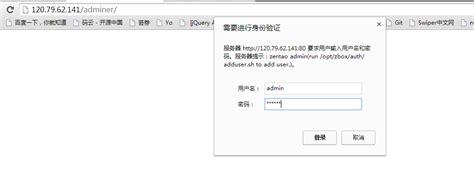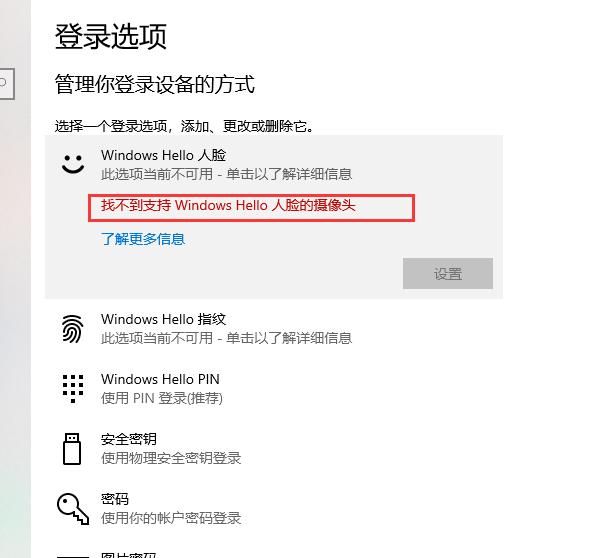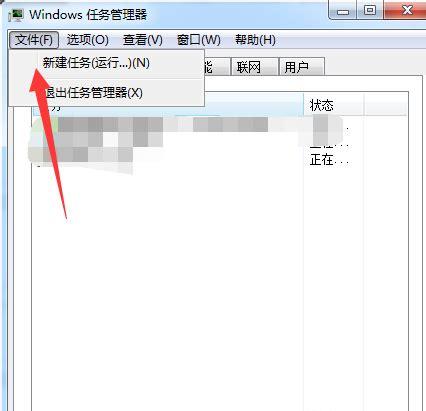目录
存储引擎
表和数据的基础操作
mysql中的数据类型
表的完整性约束
表与表之间的关系
详解
存储引擎
存储引擎就是存储数据的方式,也称作表类型。
一张表中的信息:

数据;
表的结构;
索引:查询的时候使用的一个目录结构。
常用存储引擎
1.Innodb存储引擎
mysql5.6之后默认的存储引擎是Innodb存储引擎。
数据和索引存储在一起:有2个文件(数据索引、表结构);
数据持久化:数据都是存储在硬盘上的;
支持事务:为了保证数据的完整性,将多个操作变成原子性操作,可以保证数据安全;
支持行级锁:修改的行少的时候使用,可以用于修改数据频繁的操作;
支持表级锁:批量修改多行的时候使用,可以用于对大量数据的同时修改;
支持外键:约束两张表中的关联字段不能随意的添加\删除,可以降低数据增删改的出错率。
2.Myisam存储引擎
mysql5.5之前默认的存储引擎是Myisam存储引擎。
数据和索引不存储在一起:有3个文件(数据、索引、表结构);
数据持久化:数据都是存储在硬盘上的;
只支持表级锁。
3.Memory存储引擎
数据存储在内存中:有1个文件(表结构);
数据断电消失:数据存储在内存中。
存储引擎相关的sql语句
1.查看当前数据库默认的存储引擎show variables like “default_storage_engine”;2.查看当前数据库支持的存储引擎show engines;3.在建表时指定存储引擎create table 表名(字段名1 数据类型(长度),字段名2 数据类型(长度),…) engine = 存储引擎; create table user(id bigint(12),name varchar(200)) engine = MyISAM; 4.修改一个已经存在的表的存储引擎alter table 表名 engine = 存储引擎;alter table user engine = InnoDB;
(左右滑动查看完整内容)
在配置文件中指定存储引擎
# my.ini文件[mysqld]# 创建新表时将使用的默认存储引擎default-storage-engine=INNODB
(左右滑动查看完整内容)
表和数据的基础操作
创建表
#语法create table 表名(字段名1 数据类型[(长度) 约束条件],字段名2 数据类型[(选项) 约束条件],…);#注意:1. 在同一张表中,字段名不能重复2. 长度和约束条件可以不写3. 字段名和数据类型是必须写的create table user(id int,name char(18));
(左右滑动查看完整内容)
往表中插入数据
insert into 表名 values (值1,值2,值3);# 这张表有多少字段,就需要按照字段的顺序写入多少个值insert into user values (1,’pamela’);insert into 表名 values (值1,值2,值3),(值1,值2,值3),(值1,值2,值3);# 一次性写入多条数据insert into user values (1,’pamela’),(2,’bill’);insert into 表名 (字段1,字段3) values (值1,值3);# 指定字段名写入,可以任意的选择表中需要写入的字段insert into user (name) values (‘pamela’);
(左右滑动查看完整内容)
查看表结构
desc 表名;describe 表名;# 能够查看字段\数据类型\长度,看不到表编码、存储引擎,具体的约束信息只能看到一部分show create table 表名;# 能查看字段\数据类型\长度\编码\存储引擎\约束show create table 表名\G;# \G可以使记录竖向排列,以便更好的显示内容较长的记录
(左右滑动查看完整内容)
修改表结构
1.修改表名alter table 表名 rename 新表名;2.增加字段alter table 表名 add 字段名 数据类型[(长度)] [约束条件], add 字段名 数据类型[(长度)] [约束条件]; 3.删除字段alter table 表名 drop 字段名;4.修改字段alter table 表名 modify 字段名 数据类型[(长度)] [约束条件];alter table 表名 change 旧字段名 新字段名 旧数据类型[(长度)] [约束条件];alter table 表名 change 旧字段名 新字段名 新数据类型[(长度)] [约束条件];5.修改字段排列顺序/在增加的时候指定字段位置alter table 表名 add 字段名 数据类型[(长度)] [约束条件] first;alter table 表名 add 字段名 数据类型[(长度)] [约束条件] after 字段名;alter table 表名 change 字段名 旧字段名 新字段名 新数据类型[(长度)] [约束条件] first;alter table 表名 modify 字段名 数据类型[(长度)] [约束条件] after 字段名;
(左右滑动查看完整内容)
mysql中的数据类型
数值类型
int:整数,不约束长度,最多表示10位数。
float(m,n):浮点数,m表示一共多少位,n表示小数部分多少位。
create table t1( id int, # 默认是有符号的 age tinyint unsigned # 如果需要定义无符号的,使用unsigned);create table t2( f1 float(5,2), # 保留2位小数,并四舍五入 f2 float, f3 double(5,2), f4 double)insert into t2 (f2,f4) values (5.1783682169875975,5.1783682169875975179);create table t3( f1 float, # 保留2位小数,并四舍五入 d1 double, d2 decimal(30,20), d3 decimal);insert into t3 values(5.1783682169875975179,5.1783682169875975179, 5.1783682169875975179,5.1783682169875975179);
(左右滑动查看完整内容)
日期时间类型
datetime:年月日时分秒,20210712141900。
year:年份,2021。
date:年月日,20210712。
time:时分秒,141900。
timestamp:时间戳,年月日时分秒,20210712141900。
create table t4( dt datetime, y year, d date, t time, ts timestamp);create table t5( id int, dt datetime NOT NULL # 不能为空 DEFAULT CURRENT_TIMESTAMP # 默认是当前时间 ON UPDATE CURRENT_TIMESTAMP # 在更新的时候使用当前时间更新字段);
(左右滑动查看完整内容)
字符串类型
char(长度):
最多能表示255个字符;
定长存储,浪费空间,节省时间;
char可以不写长度;
varchar(长度):
最多能表示65535个字符;
变长存储,节省空间,存取速度慢;
varchar必须写长度;
适用字段:评论、朋友圈、微博。
create table t6( c1 char(1), v1 varchar(1), c2 char(8), v2 varchar(8)); create table t7( c1 char, v1 varchar(1), c2 char(8), v2 varchar(8));
(左右滑动查看完整内容)
enum和set类型
enum:单选行为,在创建表时通过枚举方式显示,只允许从值集合中选取单个值,而不能一次取多个值。
set:多选行为,在创建表时通过枚举方式显示,允许从值集合中任意选择一个或多个元素进行组合,对超出范围的内容将不允许注入,而对重复的值将进行自动去重。
create table t8( id int, name char(18), gender enum(‘male’,’female’) # 单选);create table t9( id int, name char(18), hobby set(‘看书’,’看电影’,’跑步’,’画画’,’爬山’) # 多选);insert into t9 values (1,’pamela’,’看电影,画画,看书,跑步’);insert into t9 values (2,’bill’,’看书,看书,看书,跑步,打游戏’); # 会自动去重
(左右滑动查看完整内容)
表的完整性约束
表的完整性约束就是对某一个字段进行约束,约束条件与数据类型的长度一样,都是可选参数。
无符号的 unsigned
如果需要定义无符号的数值类型,可使用unsigned。
create table t10( id int unsigned);
(左右滑动查看完整内容)
不能为空 not null
非空约束,指定某列不能为空,null表示空,非字符串。
create table t11( id int unsigned not null, name char(18) not null);
(左右滑动查看完整内容)
默认值 default
创建列时可以指定默认值,当插入数据时如果未主动设置,则自动添加默认值。
create table t12( id int unsigned not null, name char(18) not null, male enum(‘male’,’female’) not null default ‘male’);
(左右滑动查看完整内容)
唯一约束 unique
不能重复:unique,指定某列的值不能重复,但是null可以写入多个。
create table t13( id1 int unique, id2 int);
(左右滑动查看完整内容)
联合唯一:指定某几列的组合不能重复,unique(字段1,字段2)。
create table t14( id int, server_name char(12), ip char(15), port char(5), unique(ip,port) # 联合唯一);
(左右滑动查看完整内容)
主键 primary key
主键就是非空 唯一约束。
一张表只能定义一个主键,如果不指定主键,默认是第一个非空 唯一的字段。
create table t15( id int not null unique, # 主键 username char(18) not null unique);create table t16( username char(18) not null unique, # 主键 id int not null unique);create table t17( username char(18) not null unique, id int primary key # 主键);
(左右滑动查看完整内容)
联合主键:primary key(字段1,字段2)。
create table t18( id int, server_name char(12), ip char(15) default ”, port char(5) default ”, primary key(ip,port)); create table t19( id int primary key, server_name char(12), ip char(15) not null, port char(5) not null, unique(ip,port));
(左右滑动查看完整内容)
自增 auto_increment
约束字段为自动增长,自增只能对数字int有效,自带非空约束。
自增字段必须至少是unique的约束。
create table t20( id int primary key auto_increment, name char(12));
(左右滑动查看完整内容)
外键 foreign key
foreign key(自己的字段) references 外表(外表字段)
外键字段必须至少是unique的约束。
create table class( cid int primary key auto_increment, cname char(12) not null, startd date);create table student( id int primary key auto_increment, name char(12) not null, gender enum(‘male’,’female’) default ‘male’, class_id int, foreign key(class_id) references class(cid));create table student2( id int primary key auto_increment, name char(12) not null, gender enum(‘male’,’female’) default ‘male’, class_id int, foreign key(class_id) references class(cid) on update cascade # 级联更新 on delete cascade # 级联删除,尽量不用);
(左右滑动查看完整内容)
表与表之间的关系
多对一(一对多)
多对一(一对多):一个班级可以对应多个学生,但一个学生只能对应一个班级。
关联方式:foreign key,学生表有一个外键关联班级表。
create table class( cid int primary key auto_increment, cname char(12) not null, startd date);create table student( id int primary key auto_increment, name char(12) not null, gender enum(‘male’,’female’) default ‘male’, class_id int, foreign key(class_id) references class(cid));
(左右滑动查看完整内容)
多对多
多对多:一个班级可以对应多个学生,一个学生也可以对应多个班级(双向的一对多,即多对多)。
关联方式:foreign key 一张新的表(两个外键),新表有两个外键,分别关联学生表和班级表。
create table class( cid int primary key auto_increment, cname char(12) not null, startd date);create table student( sid int primary key auto_increment, sname char(12) not null, gender enum(‘male’,’female’) default ‘male’);# 这张表就存放班级表与学生表的关系,即查询二者的关系查这个表就可以了create table class_student( id int primary key auto_increment, class_id int not null, foreign key(class_id) references class(cid), student_id int not null, foreign key(student_id) references student(sid), primary key(class_id,student_id));
(左右滑动查看完整内容)
一对一
一对一:一个学生唯一对应一个客户。
关联方式:foreign key unique,学生表有一个外键(唯一的) 关联客户表。
create table customer( id int primary key auto_increment, name varchar(20) not null, gender enum(‘male’,’female’) default ‘male’, phone char(16) not null );create table student( id int primary key auto_increment, class_name varchar(20) not null, customer_id int unique, # 该字段一定要是唯一的 foreign key(customer_id) references customer(id) # 外键的字段一定要保证unique);
(左右滑动查看完整内容)










